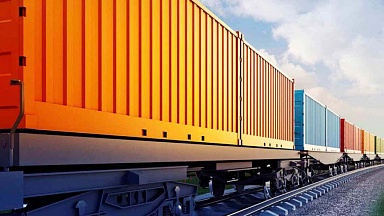Today’s Ningbo Containerized Freight Index (NCFI) North Europe and Mediterranean component jumped by 8.7%, almost matching the 8.6% increase on the Shanghai Containerized Freight Index (SCFI).
«Carriers collectively pushed up rates for April voyages and booking prices rose sharply,» said the NCFI commentary.
According to Drewry’s WCI index, rates from Asia to North Europe were up 5% this week, to $7,852 per 40ft, but in practice shippers are paying much more — if they can find a line to accept bookings.
«Spot rates are being driven up, and longer-term or contract rates are effectively worthless,» said UK-based forwarder Westbound Logistics.
«There is already limited equipment and booking availability, which is varying from line to line and from origin to origin. Finding a line with a booking slot has become a struggle and when slots are found, they will go quickly if the booking is not confirmed immediately.
«This means when we quote a spot rate, we may only have a very limited time — sometimes only 10-15 minutes — before that quote becomes unavailable to book,» said Westbound.
Moreover, it seems the situation for shippers could get much worse before it gets better.
During a press briefing yesterday, Hapag-Lloyd CEO Rolf Haben Jansen said: «Box availability will be tight for the next six to eight weeks.
«We expect most services will miss one-to-two sailings, which will impact available capacity in Q2.»
He added, however, that he was «optimistic» of a «return to normalcy in Q3».
Meanwhile, on the transpacific tradelane, the Freightos Baltic Exchange (FBX) reading for Asia to the US west coast increased 4% this week, to $5,375 per 40ft, 251% higher than for the same week of last year, while for the east coast, the FBX was up 2%, to $5,868 per 40ft — 108% up on the year before.
Transpacific BCOs are in the final stages of contract negotiations with carriers, which, according to reports to The Loadstar, are «not negotiations at all but demands by the shipping lines».
And, according to Jon Monroe, of Washington state-based Jon Monroe Consulting, some carriers are reducing the MQC (minimum quantity commitment) for BCO annual contracts in order to allocate more space for premium-rated business.
He said: «It is not that carriers do not have space. It is that they only have a limited amount of space for the very high-paying FAK cargo.»
Elsewhere, the hitherto stable transatlantic tradelane is also starting to see some enormous increases in rates.
«Continued strong demand and scarce capacity sent rates spiking this week,» said Freightos research lead Judah Levine, who noted that prices from Europe to North America had jumped 30% to a multi-year high of $2,851 per 40ft, and reflected a 55% increase since the start of the year.
Indeed, the rate hike contagion has spread to almost all tradelanes, and that is going straight to the bottom lines of the carriers, with, for example, Cosco Shipping saying this week it expects to post a net profit of $2.3bn just for the first quarter, having seen a 55% increase in its average rate compared with Q4 20.




